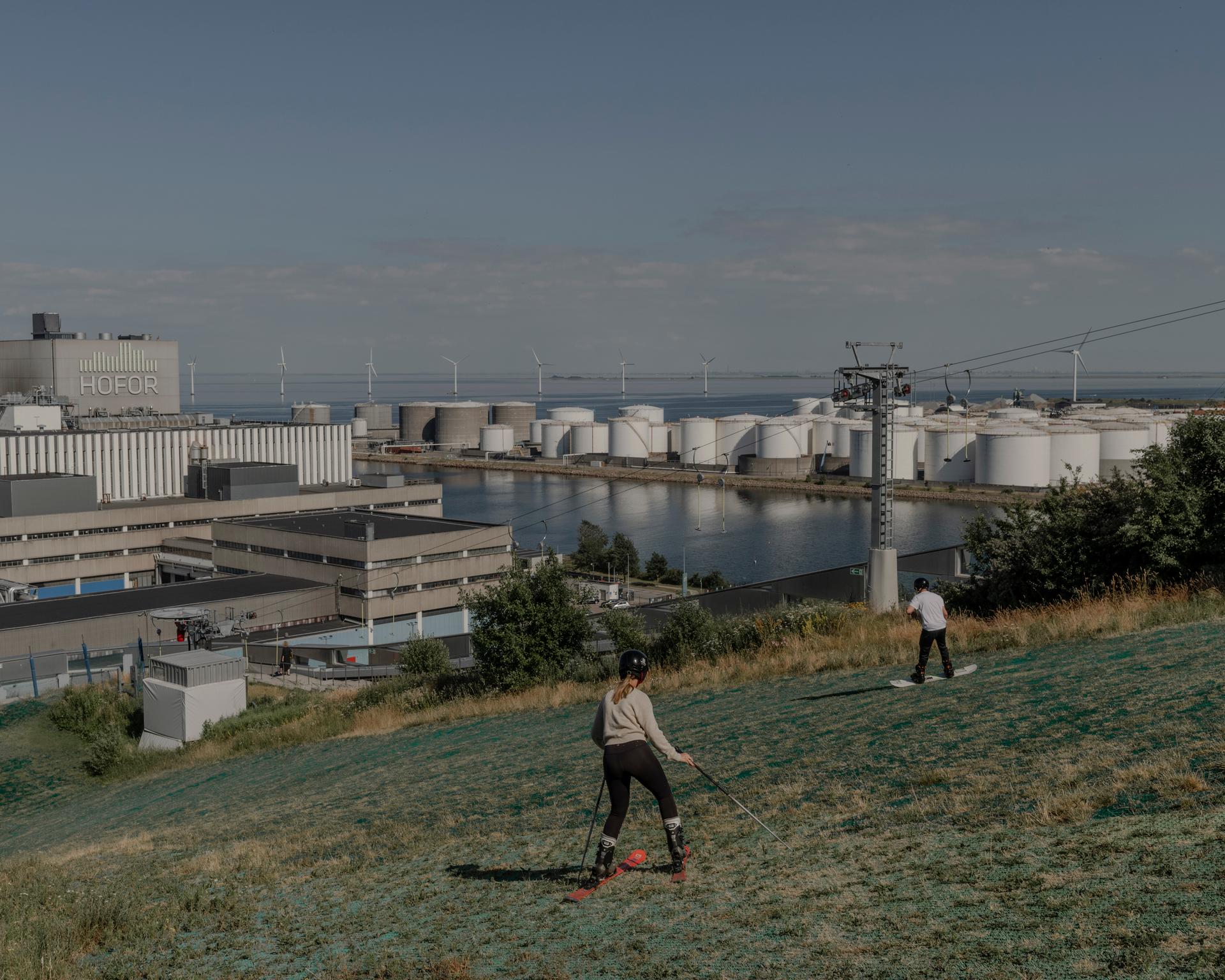At an altitude of 85 metres, skiers are taking to the slopes, first hesitantly carving turns before enjoying the ride. Apart from the mountain gear, there’s nothing familiar about the experience. Not the image: Skiers, in T-shirts and shorts, cut through a green plastic mesh, skirting trees and pipes from which wisps of steam escape. The line-up of tugs juxtaposes with that of wind turbines in the distance. Nor the sound: The scrape of skis and snowboards mingles with birdsong and the muffled whistle of the power station. CopenHill is a unique concept: a 465-metre-long ski slope installed on the roof of an imposing factory producing energy from waste in the heart of Copenhagen, Denmark, one of the symbols of the city’s fight to reduce its greenhouse gas (GHG) emissions.


The Danish capital has long been a pioneer in the fight against the climate crisis. As early as 2009, it set itself the target of becoming carbon-neutral by 2025, in other words releasing no more CO2 than natural sinks, such as trees, can absorb. At the time, the project was radical, almost revolutionary. No other city or even country was aiming for net zero on such a short timescale. Paris only adopted such a target in 2018 and France in 2019, each time looking ahead to 2050. “In 2009, when Copenhagen hosted COP15 on climate, the municipality wanted to participate to do something remarkable. The first climate plan, adopted in 2012, was seen as extremely ambitious,” said Line Barfod, one of the city’s seven mayors in charge of technical and environmental affairs, in a municipality dominated by left-wing parties.
Copenhagen has come a long way, but it won’t reach its goal. At least not by 2025. “I was disappointed, but we’ve almost reached our goal. We hope to get there soon, maybe in 2026, 2027 or 2028,” she said. Everything will depend on the state aid that the city hopes to obtain to enable CopenHill’s incinerator, the Amager Bakke, managed by the state-owned Amager Resource Center, to capture and store its CO2 emissions.


The stakes are high and far exceed the capital’s 660,000 inhabitants, or even the 5.8 million Danes. Today, cities are home to more than half of humanity – they will be home to three quarters by 2050 – and are responsible for around 70% of GHG emissions. Finding solutions to decarbonize transport, buildings, energy production systems, food consumption and waste is crucial to limiting warming and avoiding its worst effects, from heatwaves to floods.
If metropolises are both a problem and a solution in the climate crisis, despite delays and compromises, Copenhagen is moving ever more towards the second option. Already, the Little Mermaid metropolis has reduced its CO2 emissions by 75%, since 2005, and will achieve an 80% drop, by 2025. And all this while its population has increased by a quarter over the period, as has its economic growth.
You have 84.67% of this article left to read. The rest is for subscribers only.